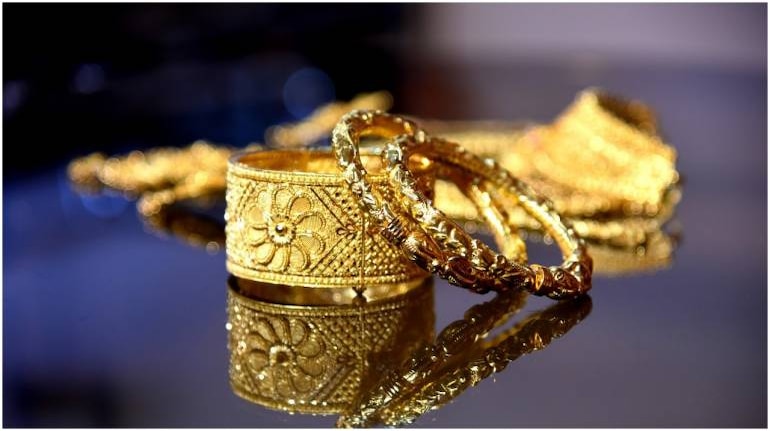



If you are anything like me, you’d have received at least 20-30 notifications in the past week to invest in or buy gold through various methods. The festive season of Diwali and Dhanteras seems to be a season of selling gold.
The fact is whether it is digital gold through UPI apps or gold coins or even gold jewellery on e-commerce sites, buying gold has become incredibly simple.
Keep in mind that I am saying “buying” and not investing in gold. We Indians have always believed that gold is an investment for the future. With Dhanteras, buying gold has become a ritual. However, what we rarely think about is the purpose.
According to legend, Dhanteras is about a heap of gold helping cause a distraction that saved a prince’s life. Gold is all about symbolism, in the case of Dhanteras. It’s auspicious because of what it helped achieve, not just for what it is. This principle applies to investments in the precious metal, not gold purchases.
There are six options to consider today: 1. Jewellery 2. Gold coins/bars/biscuits (physical gold) 3. Digital gold 4. Gold exchange traded funds (ETFs) 5. Gold mutual funds, and 6. Sovereign gold bonds. The purpose of having gold in your wealth portfolio should decide what you invest in.
Gold jewellery and coinsLet’s begin with gold jewellery. It’s good for aesthetics but makes for inefficient investment because one doesn’t get the actual value of gold. Making charges and the type of jewellery reduce the value of the actual gold. So gold jewellery is best bought as a pure consumption item for your happiness.
Gold coins or bars are a better way to buy the actual metal, but storing it can be a problem due to security issues. As a result, you generally end up paying for a locker. Also, liquidating it can be a challenge sometimes.
Digital goldDigital gold is a virtual way of buying gold. It’s like buying gold stored in an insured vault and is bought in grams, just as you would buy a gold coin or bar.
The major challenge with this approach is that it is not regulated well. The Securities and Exchange Board of India has prohibited brokers from selling digital gold as it does not regulate this instrument. You will also have to pay GST on it, just as in the case of physical gold. So buyer beware is essential here.
Gold ETFsGold ETFs invest in the actual metal and you can invest in them just as you would buy the shares of a company or any other ETF. You need a brokerage account to buy gold ETFs.
SEBI rules apply here, so it is much better from a regulatory point of view. The value of gold ETFs varies based on the prevailing price of gold.
Gold mutual fundsGold mutual funds invest in gold ETFs. As with other kinds of mutual funds, you can choose from systematic investment plans, systematic transfer plans and systematic withdrawal plans, making it a flexible instrument for gold investments.
It doesn’t require a brokerage account, which means it is more accessible. The minimum investment is low, making it easy to start with this. The instrument moves in ways similar to gold ETFs.
Also read | How sovereign gold bonds are taxed: A complete guideSovereign gold bondsSGBs or sovereign gold bonds are gold-backed government bonds that offer interest (2.5 percent) over and above the regular appreciation in gold prices. It is quite an excellent way to invest in gold, but SGBs are issued only periodically, so you can’t invest as and when you want.
They also come in with an eight-year lock-in, making them the least liquid option among other non-physical gold investments. However, they come with a significant tax advantage due to their capital gains treatment, which makes up for their relative illiquidity.
So what’s the golden choice?For most investors, gold MFs and gold ETFs make more sense than other forms if the purpose is investing. SGBs are a great option if you can catch their issue dates and if your horizon is long enough.
Another thing is to check your asset allocation before buying gold as an investment. What goals do you hope to achieve with your gold allocation? Ask yourself this question to ensure that the gold in your portfolio serves an actual purpose.
The purpose of gold is usually to balance equity volatility during uncertain times. However, with growth in gold prices in the recent past being subdued, it’s also not a bad time to add gold to your portfolio.
While digital gold is an exciting option, the lack of regulatory oversight in this instrument exposes it to risks that an investor can’t foresee.
Finally, an important thing to consider, especially at this time of the year, is that if you want to buy gold, especially physical gold, for your family and for your peace of mind, do it even if it isn’t the best choice investment-wise.
After all, festivals like Dhanteras are all about sentiment and spirituality. Gold is considered auspicious and has a more traditional and emotional connection with people during this time. While investing right is important, there are a few things that hold prominence beyond returns and growth in wealth.
It’s okay to buy a little bit of gold to commemorate Dhanteras and Diwali. The chunk of gold as part of your asset allocation can be bought through the mutual fund route.
Discover the latest Business News, Sensex, and Nifty updates. Obtain Personal Finance insights, tax queries, and expert opinions on Moneycontrol or download the Moneycontrol App to stay updated!
Find the best of Al News in one place, specially curated for you every weekend.
Stay on top of the latest tech trends and biggest startup news.